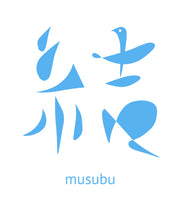The Prayer and rice

Japan has walked with the history of rice cultivation.
The history of rice
Rice cultivation in Japan began in the 3rd century BC. Carbonized rice and tools believed to have been used for rice cultivation were excavated from the Kaboto site in the lower reaches of the Yangtze River approximately 7,000 years ago. Rice cultivation spread from here to India and other parts of Asia.
Since then, the Emperor, who ruled the Yamato Imperial Court (the name given to Japan at the time of its founding), has been the head of state up to the present day, and his duty is to always think of the people and pray for them.
His duty is to always think of the people and pray for them. He has been doing so ever since the founding of the nation.
Shinto is the pillar of religion in Japan, and there are various annual events that co-exist with human beings by worshipping nature as a god.
There are shrines throughout Japan, and the local people who live there perform various styles of rituals, working together to hold seasonal events and giving thanks for the nature of the area. Sometimes solemn, sometimes energetic, and some ceremonies last for several nights.
The emperor performs many more ceremonies than that of the people, and the most important of these ceremonies is called the Niinamesai which takes place every year on November 23rd, when the rice harvested that year is eaten together with the gods.



In spring, after the cold winter has passed, melted snow from the mountains flows into the plains, and the rice planted neatly in the rice paddies grows while absorbing the high-quality water.
Each grain of rice absorbs the water, and the process of carefully nurturing it for life is harmonized with nature to enrich our lives!
'' Don't waste even a grain of rice, because everyone is a god! ''
I was told by my parents when I was a child.

The fact that we have forgotten this lesson, the way we live now, is not good, but the fact that it has been handed down from the ancient times is still there.
We can repent for our current state of affairs because we still have them.

There are several shrines in Japan that hold almost daily rituals to worship rice as a deity.
The place seen in the photo is Yahiko Shrine in Niigata Prefecture. Niigata Prefecture is famous for its high-quality rice harvest. Tsubame City in Niigata Prefecture is also very famous for its kitchen knives, a typical Japanese quality product.
I visited Yahiko Shrine and participated in a ritual that takes place every morning.
My body and taste buds have lived on a diet of rice. Somehow, I had only thought that Japanese people like rice, but when I sat in the ritual at this shrine, where the priest chanted the words of celebration and reported daily thanksgiving to God
When I sat in the ceremony, I felt deep gratitude for nature, for the farmers who cultivate their crops while worshipping nature all the time, and for everything involved in the process of transporting the crops to the city where I live.
There are so many delicious foods in Japan.
I was moved to realize that this is the result of the wisdom and prayers of our ancestors who lived in the past.

To preserve tradition with civilization, keep the body moving, and live in harmony with nature. We feel that this is the last message from our ''scientific view''.

